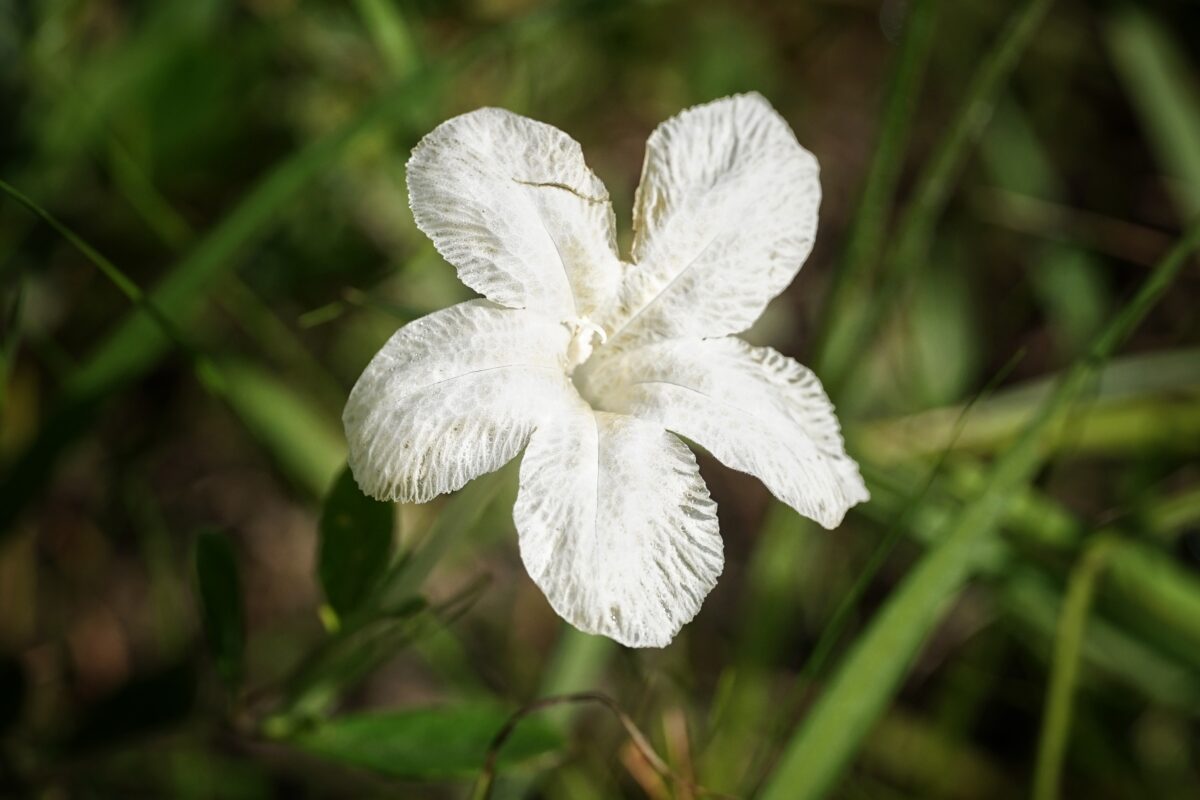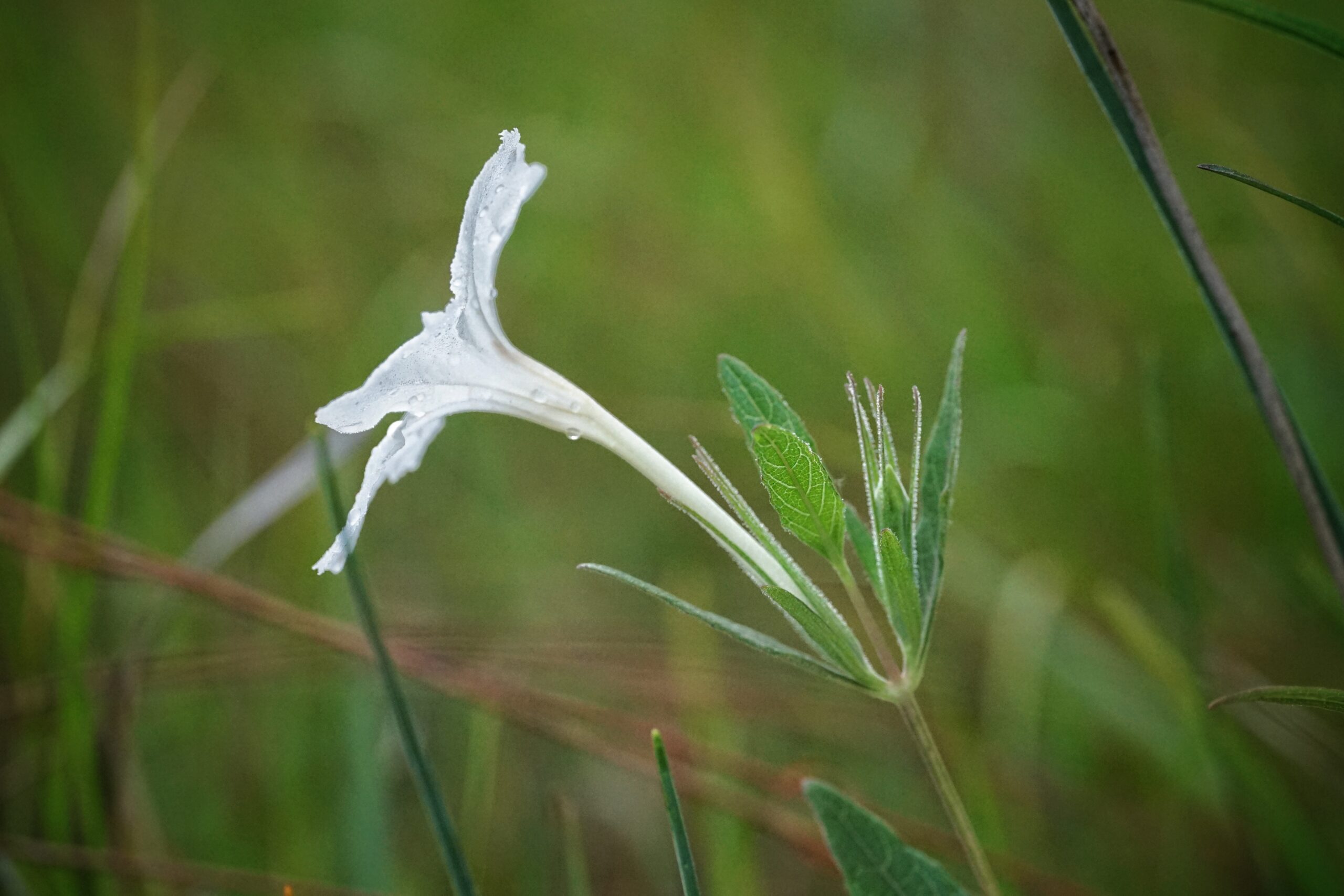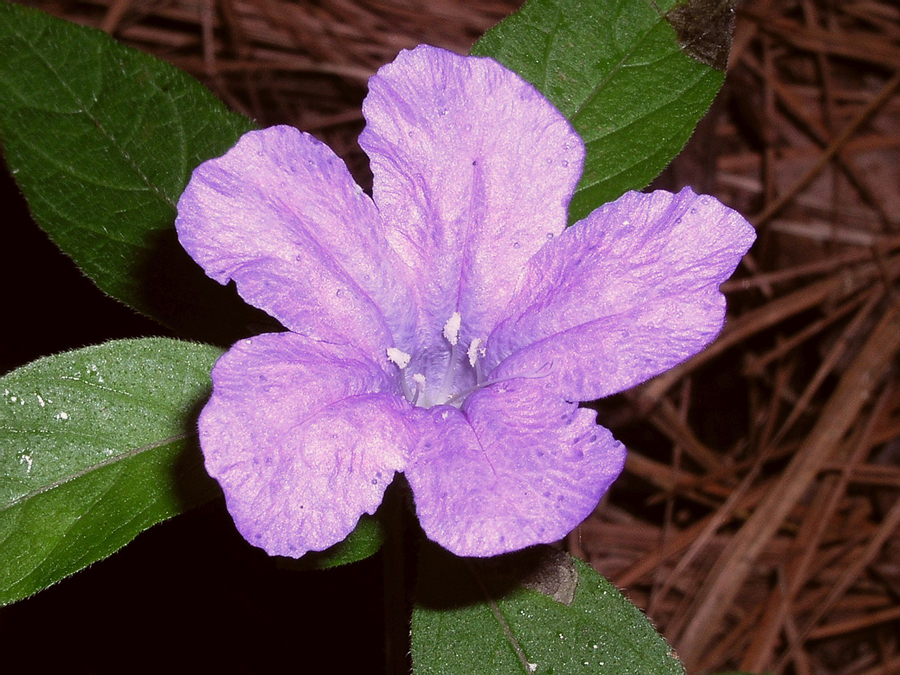Nightflowering wild petunia
Pictured above: Nightflowering wild petunia (Ruellia noctiflora) by Emily Bell. Click on terms for botanical definitions. View post as a PDF.
As the name suggests, Nightflowering wild petunia (Ruellia noctiflora) is a night-blooming wildflower whose flowers open around dusk then shrivel and drop by mid-morning the next day. The bloom’s nectaries are located at the base of a 3 inch long flower tube requiring a special pollinator whose tongue is long enough to reach in and take a sip! The pollinators that fit this bill are sphinx moths (family Sphingidae). These nocturnal moths are attracted by the petunia’s large white flowers.
White flowers up to 4 inches across have five spreading petals and are born on short (12-16 inches) slender, hairy, purplish stems. Sepals are .5-1 inch long and very narrow. The leaves are opposite, oval shaped with pointed tips, and 1-2 inches long. Fruits are .8-inch long oval capsules with a long persistent style.

Found in moist to wet flatwoods and hammocks and even along wet roadsides, Nightflowering wild petunia is rare across its range from South Carolina west to Louisiana. It is considered globally vulnerable and is listed as state endangered in Florida. Its primary threats are fire suppression and habitat loss.
Family: Acanthaceae (Acanthus family)
Native range: Vouchered from Jackson, Gulf, Franklin, Liberty and Wakulla counties in the Panhandle and Nassau, Duval, St. Johns and Clay counties in NE Florida
To see where natural populations of Nightflowering wild petunia have been vouchered, visit florida.plantatlas.usf.edu.
Lifespan: Perennial
Soil: Loamy sand
Exposure: Full sun
Growth habit: Low-growing herb
Nightflowering wild petunia plants are not commercially available. Visit a natural area to see them.
Learn more about Nightflowering wild petunia from the Florida Native Plant Society.
For more information on other Ruellia species, see these resources:


